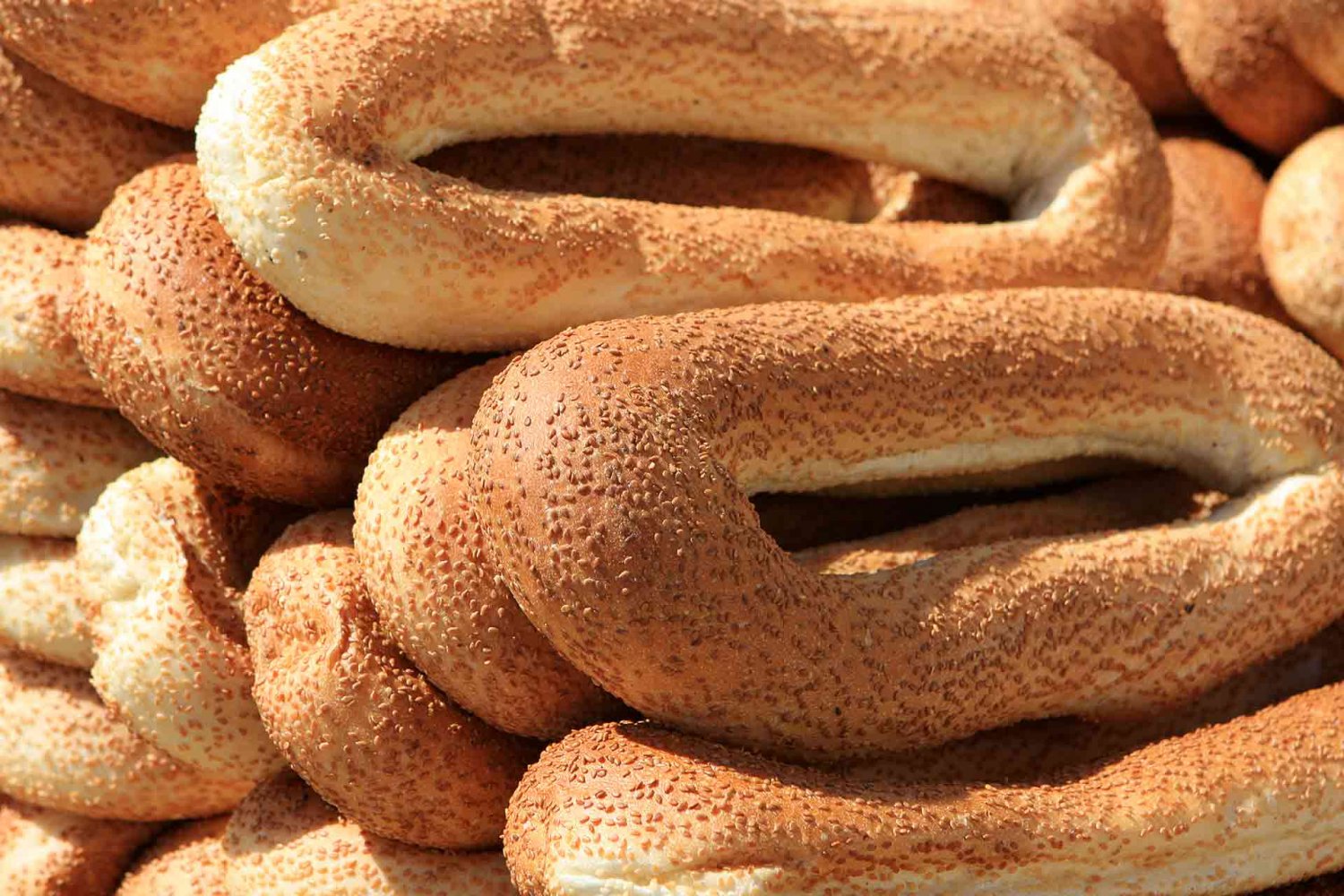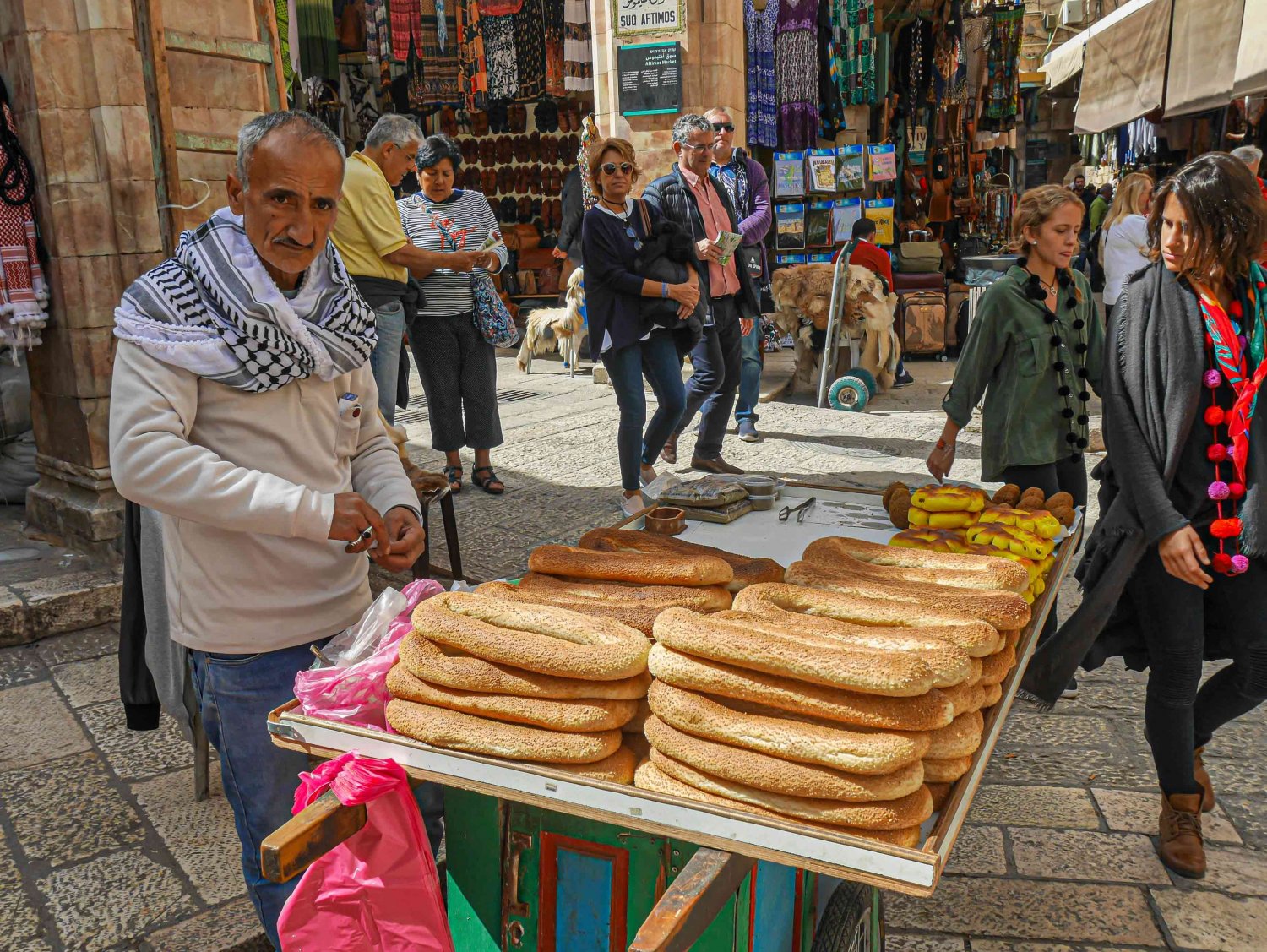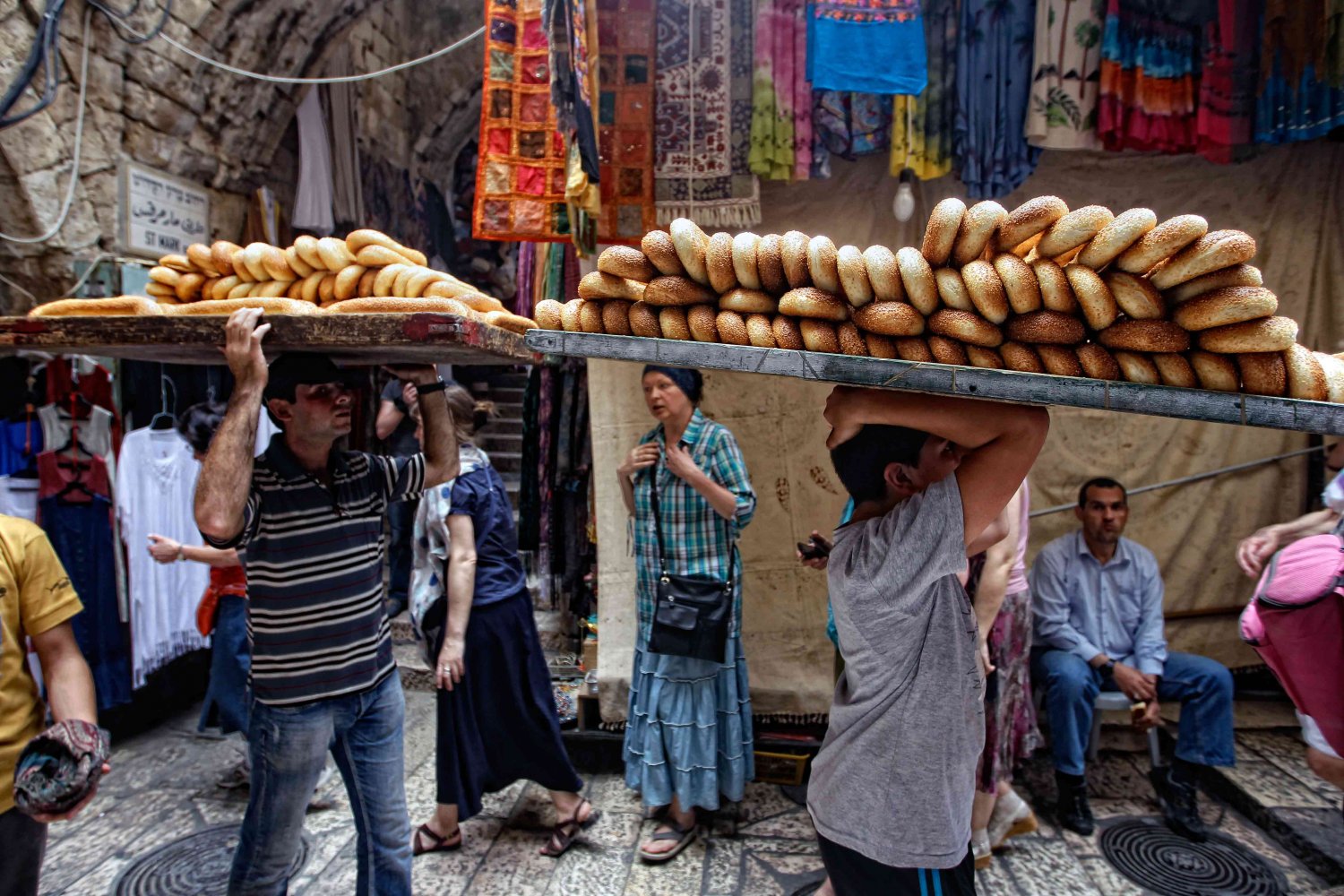How does one translate ka‘ek al-Quds into English? Although “Jerusalem bagel” might be accurate, that rendition could bring about much debate. Like most things in Jerusalem, the subject could easily turn political. The bagel and the ka‘ek are like . . . cousins. They may have similar roots, but each holds its own ground. Speaking about the two could bring up strong emotions.
The bagel, after all, originated in the Jewish communities of Poland. The ring-shaped bread has a dense and chewy texture, often topped with seeds of one’s choosing (such as poppy or sesame) on the outer crust. Its basic ingredients are flour, salt, water, and yeast leavening, but may also include corn syrup, eggs, milk, butter, sweetener, or honey. It is usually schmeared with cream cheese (or lox, tomato, onion, etc.). The bagel product has thrived in many businesses throughout Europe and the United States. New York in particular is home to some of the most sought-after bagel shops.



